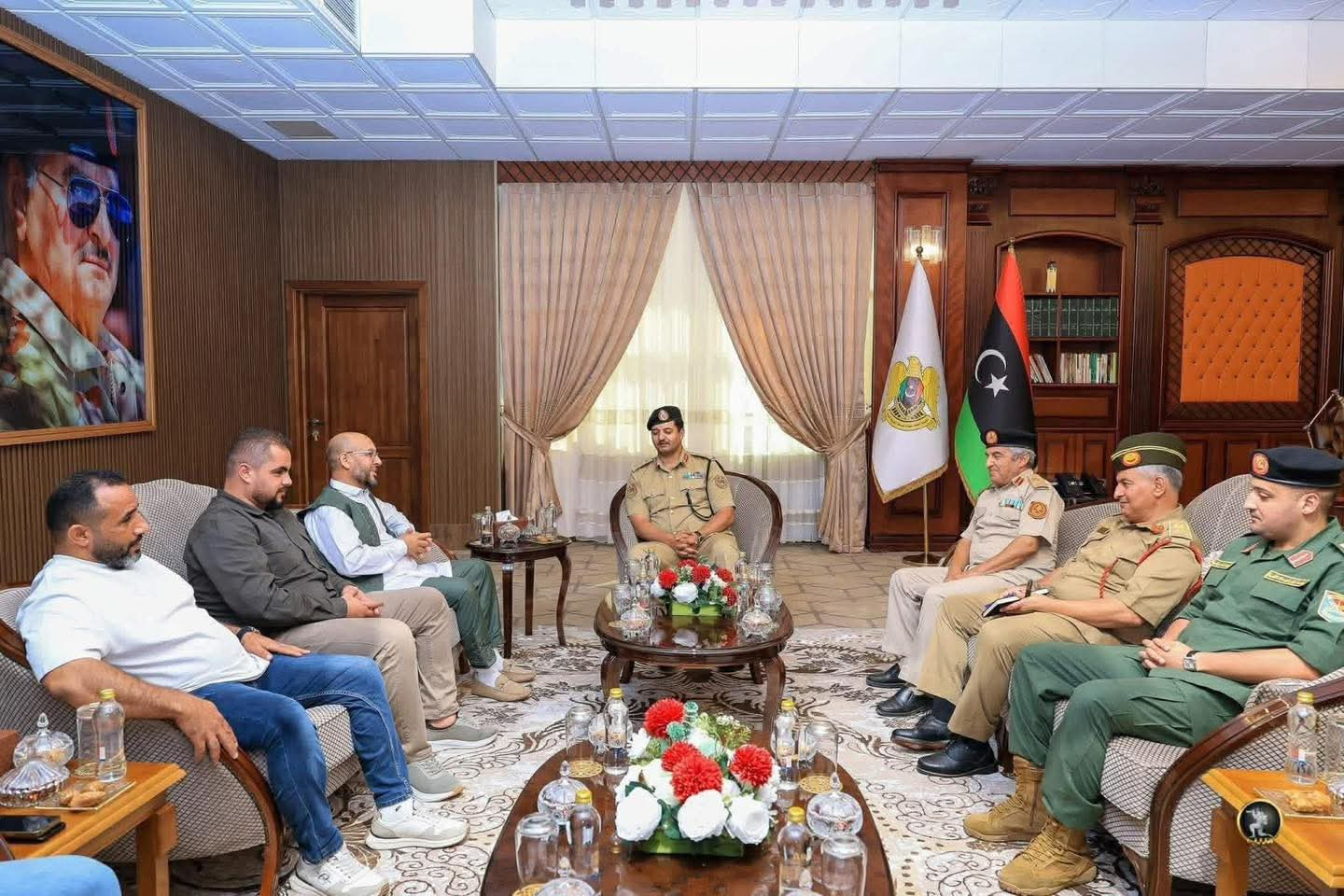Haftar’s son and Misrata faction agree to establish joint force
Published on 2025 November 3, Monday Back to articles
LAAF’s Lt-Gen Khalid Haftar meeting Misrata military commanders – Sirte – 27 October 2025 – source Libya Observer
On 27 October a military meeting in Sirte brought together the Libyan Arab Armed Forces’ (LAAF) Chief of Staff, Lt-Gen Khalid Khalifa Haftar, and several prominent figures from Misrata. It was billed as a strategic shift towards enhancing national security and unifying military efforts against cross-border challenges. Key participants from Misrata’s military leadership included Al-Tuhami al-Jatlawi, Abdullah Shabah, Ali Abu Sha’alah, and Mohamed al-Arbad, alongside elements from counter-terrorism teams, and representatives from civil institutions with a security mandate.
The participants announced military cooperation efforts designed to secure Libyan borders, counter illegal migration and active extremist groups across the region. Khalid Haftar and the Misrata security leaders reportedly agreed to form a joint force dedicated to combating terrorism and illegal migration.
However, other Misrata parties immediately denied any association with the meeting, which reveals deep fissures regarding the unification project. The GNU’s Counter-Terrorism Apparatus refuted what it called ‘rumours’ concerning the participation of some of its affiliates in the Sirte meeting, declaring that such actions are merely ‘individual acts that have no connection to the Apparatus.’
Similarly, Misrata’s mayor, Mahmoud al-Saqoutri, stated that those who travelled to Sirte did not represent the city or any of its bodies or entities. The GNU-affiliated Youth and Revolutionaries of Misrata movement also condemned the meeting, claiming that the participants did not represent anyone but themselves. It argued that those who met Haftar do not speak for Misrata or its history of struggle. They noted that they were previously part of a bloc known as ‘Against Injustice in Misrata,’ which suggests a contradiction with the slogans they advocated for in pursuit of ‘personal interests.’ The statement held the participants responsible for the resulting damage to the city’s reputation and its people, and reaffirmed that Misrata will remain the ‘city of martyrs’ committed to state institutions.
Conversely, others defended the initiative, viewing it as a clear indication of a readiness to unify the military institutions and convince the remaining armed groups of the importance of working together for Libya’s interest. This is particularly important given the recognition of the role played by the Misrata-led Operation al-Bunyan al-Marsous in freeing Sirte from Islamic State’s control in late 2016. Misrata’s pro-conciliation national parties argue that the Sirte meeting validates the on-going settlement and negotiation track.
The choice of Sirte carries strategic symbolism, having served as a line of contact between Haftar’s LAAF and the former Government of National Accord’s (GNA) forces in 2020. Its geopolitical significance is underscored by: the presence of Russian forces in its hinterland; the deployment of Western forces in Misrata; and Washington’s decision to designate the area as the site for its ‘Flintlock 2026’ military exercises, which will involve both European and African participants (Libya Politics & Security – 27.10.25).
This excerpt is taken from our Libya Politics & Security weekly intelligence report. Click here to receive a free sample copy. Contact info@menas.co.uk for subscription details.


